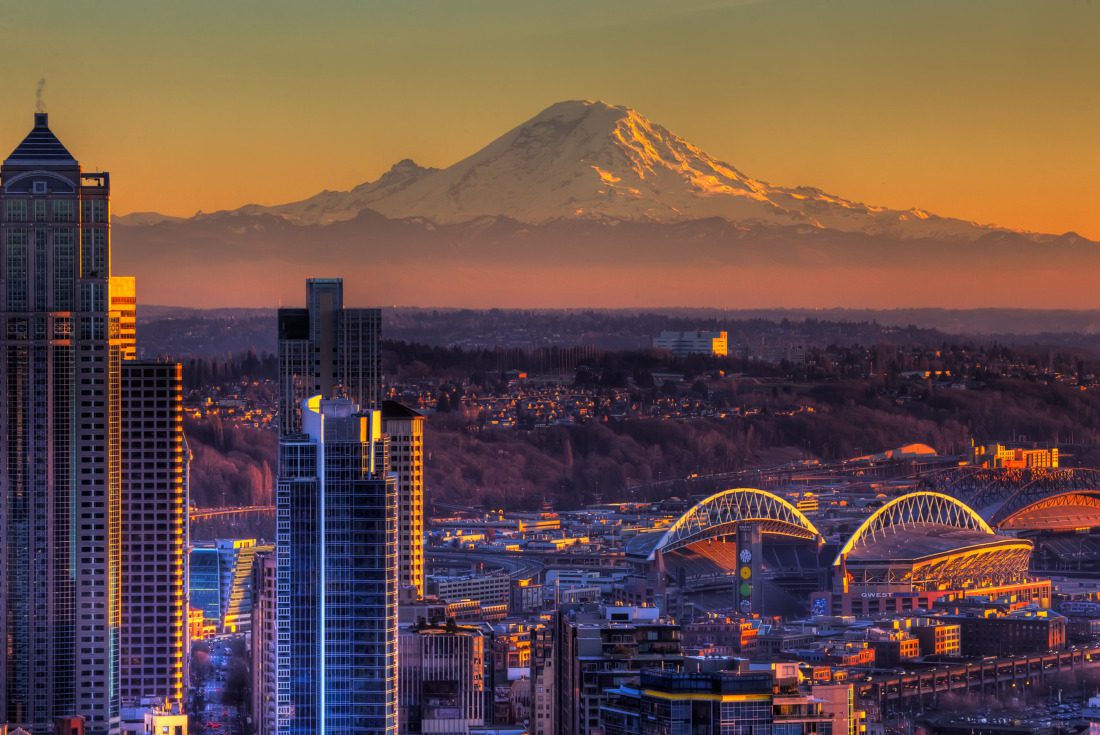State of the Market: Is History Repeating Itself?
“When’s the crash happening again?”
“When’s the bubble going to burst again?”
“Am I buying at the top of market again? I can’t afford to wait ten years to make my money back again.”
These are all examples of questions we receive daily from our clients, gravely concerned with the state of the housing market we’re experiencing in the greater Seattle area.
You may hear other agents, Zillow, the news, etc., boasting of it being the “hottest market ever” and listing off numerous statistics and percentages proving just that. They’re right. Or, you’ve heard about the intensity involved with buying when people are clamoring to submit unfathomable offers for well-above listing price, similar to before the last 2008 crisis. And lastly, the word “inventory” is being tossed around frequently, relating to the historic lack of houses and condominiums available for purchase in our community.
Sure, there are some similarities to the buildup of the subprime mortgage crisis of 2008, but there are countless differences as well. Over the last couple months, we’ve conducted in-depth research with numerous real estate professionals, economists, and housing market analysts to bring you, our clients, the most informed data that will conclude that no crash reminiscent of 2008 will be on the horizon for the foreseeable future.
WHY ANOTHER CRASH IS UNLIKELY
There are three main reasons why another crash is unlikely, which we will break down in more detail below:
- Seattle is the HOT GOSSIP.
- Inventory – that word we mentioned earlier.
- Better banking regulations.
- Buyers were overleveraged.
- Too easy to get credit.
In the years preceding 2008, new construction was wild. Suburbia was alive and well!
Seattle is the HOT GOSSIP.
Well, you knew that already. But let’s not forget about the main reasons why that are directly affecting the housing market (especially when compared to other softening markets in other areas like NYC and Southern California).
- Industry: Microsoft, Amazon, Google, Facebook, Expedia, Apple, Starbucks, Boeing, Zillow – most of which are headquartered here or have a significant office here. What other cities can you think of that have such a commanding presence with aerospace, technology, medical, and bio research? Corporations aside, we have a large military and agriculture presence as well.
- Population Growth: Related to above, our population in Seattle has risen a staggering 15+% from 2007 to 2017, meaning approximately 550 people have permanently relocated here a WEEK (twice the national rate, and it hasn’t slowed!).
- International investors LOVE the Pacific Northwest. Our city is diverse with a thriving workforce, our neighborhoods are walkable, our scenery, natural resources and coastline are superb (breaking news, huh!), and lastly, our proximity to other markets domestically and internationally is ideal. In fact, Seattle was the #1 top market for Chinese investors in 2017, more than Los Angeles and Vancouver B.C.!
- Second homes, Airbnbs, and rentals are insanely popular in Seattle. For those looking for investment properties, rents are extremely healthy and produce an amazing income each year. For second home owners, they love the PNW, and they understand their investment will only increase with time at a great pace. AirBnb owners who were previously renting out their second bedroom have now cornered the market to capitalize on numerous properties (and some, it’s their full-time job) by renting out their whole homes for high rates (where they can triple or quadruple their mortgage payment in returned income).
- There is an incredible abundance of investment capital for further development. Between corporation expansion, our ST3 transit expansion plans for the next decade or so, and residential and commercial development, Seattle will still be evolving for years to come.

INVENTORY – that word we mentioned earlier.
As we were saying above, inventory is at HISTORIC LOWS (yes, way more than 2006-2007) in the Seattle market. What we mean by saying that, is that there are hardly any homes or condominiums available to purchase for those interested in buying, meaning prices are continuing to soar even higher. This leads back to basic ECON 101, where we see on the graph the relationship of supply and demand (usually the examples in that class were apples and bananas, but you get the point). As demand increases, so does price. And since our inventory is 14% lower in March as it was last year at this same time, prices will continue to increase.
For sellers, this is great news (buyers, all hope is not lost for you though, we have solutions!). They can now sell their home for a lot more than what they paid…? Not exactly. By the time they cash out with their pot of gold, they reenter the competitive market all over again, and likely pay more proportionally than they did for their home to begin with (for example, spending over-asking for the new home when they paid under asking with the last home). And so long as they hold on, inventory (or “supply” in ECON 101!) will remain low.
Was inventory low in 2006-2008, you ask? Not even close. New construction was outrageous, and suburbia was alive and well. By the time the mortgage crisis set in, new houses and whole neighborhoods across America were left sitting vacant for years to come, because construction companies just kept building thinking nothing would ever stop them. Nowadays, construction companies can’t even keep up if they tried to accommodate all of our new neighbors, and are only on track to provide housing for 25% of new Seattleites for the next decade, meaning existing home inventory will still remain a large focus for buyers.
Check out the below graph to check out the difference in new construction rates from 2000 to present to see the corresponding differences mentioned above!

BETTER BANKING REGULATIONS
Our running joke (of many) is that our dogs could’ve gotten a loan in 2006. All they needed was to show up to their lending institution with stated income, and they were off to their McMansion!
Unfortunately, the reality of that is that countless Americans who were approved for loans were not qualified, and ultimately couldn’t afford them. Many of these loans included predatory “adjustable-rate mortgages”, where buyers would agree that their interest rate could go up at the lender’s will, drastically increasing their payment with each percentage increase. Home flippers and construction companies especially loved these style loans, since they were expecting their properties to sell for lots more, at which point they would be relieved of the mortgage. When 2008 hit, those holding onto these loans were laid off, and their loans were triggered to higher interest rates, causing all of the foreclosures and devastation, and eventually the period we know of called the “Great Recession”.
Today, lenders and banks have transformed their lending practices, requiring much stricter regulations to ensure proper qualification for buyers, to avoid a massive credit crisis from ever happening again, and to protect Americans financially. We’re lucky to work with the best-of-the-best, most trusted lending teams in Seattle, Tacoma, and beyond, and we’re aware of how much more cross-checking can go into verifying income, assets, buying power, etc., which is essential for maintaining the healthy market Seattle is experiencing today.
Between our city, its citizens and their enterprises, and the interest surrounding Seattle domestically and internationally, it’s undeniable that we’ll all continue to enjoy the positive economic climate for years to come!
Catch us with any additional questions or advice, and we’ll be happy to help!
-Carson








Leave A Comment